Orkney exhibition celebrates the art of building ships in bottles
- Published
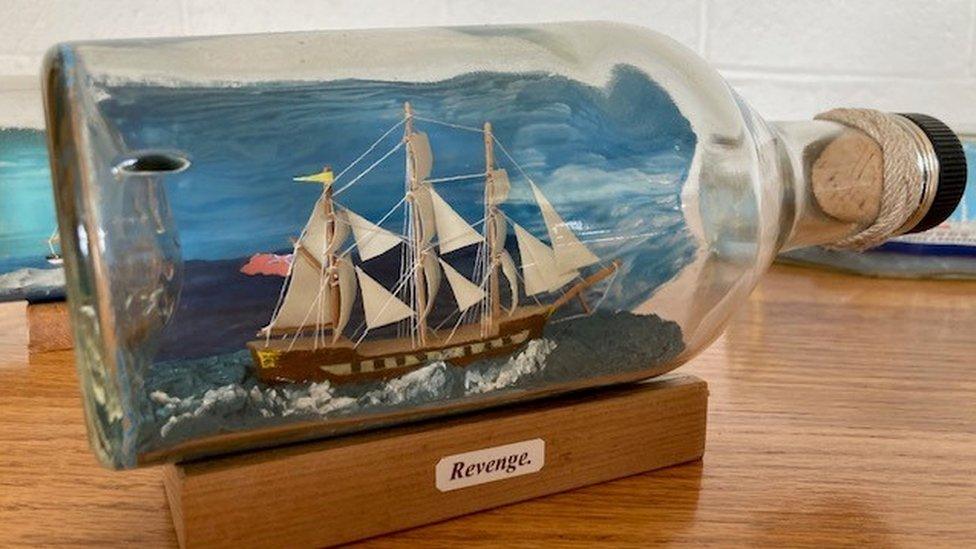
Len Wilson's ship in bottle models feature in a new exhibition in Orkney
A steady hand, sharp eyesight and most importantly patience are the vital requirements for the traditional craft of putting miniature ships in bottles, according to Orkney maker Len Wilson.
His work features in a new exhibition in Stromness showcasing the maritime tradition which dates back to the 18th century.
The display at the Northlight Gallery aims to highlight the skills, effort and time that go into creating the intricate artefacts.
Len learned the process from his father and has spent decades teaching others.
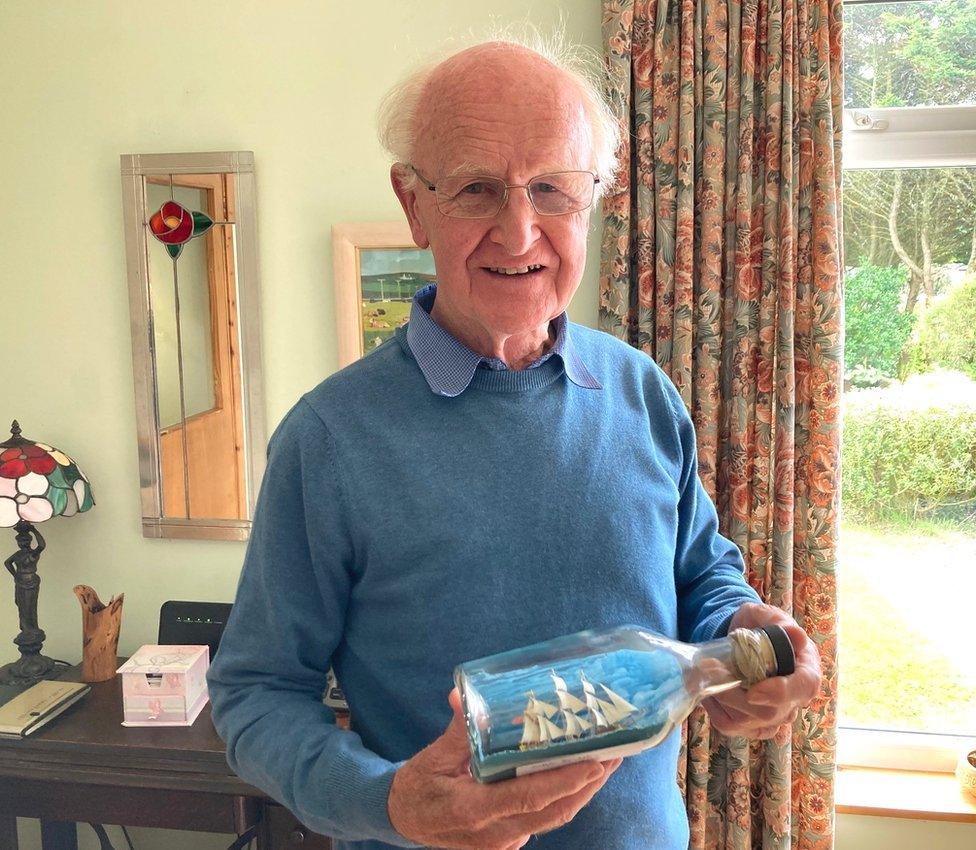
Len has been teaching others the craft he learned from his father
The retired radio engineer recalls his father, who was a ship's carpenter in the 1920s and 1930s, making a ship, not in an old bottle, but in an old wireless valve.
Len started making the artworks in his 20s.
He says the process is a detailed and time-consuming one which starts with the maker carving the hull and gluing it onto a bigger piece of wood to keep it stable.
The next step is then constructing the masts and the spars which are made out of bamboo. This works best, according to Len, because it's very strong, even when sliced thin.
"The masts are made one at a time, then the spars added, then rigging added," explains Len.
"Eventually you end up with a completed ship which then has to be sort of almost destroyed again to get it back into the bottle."
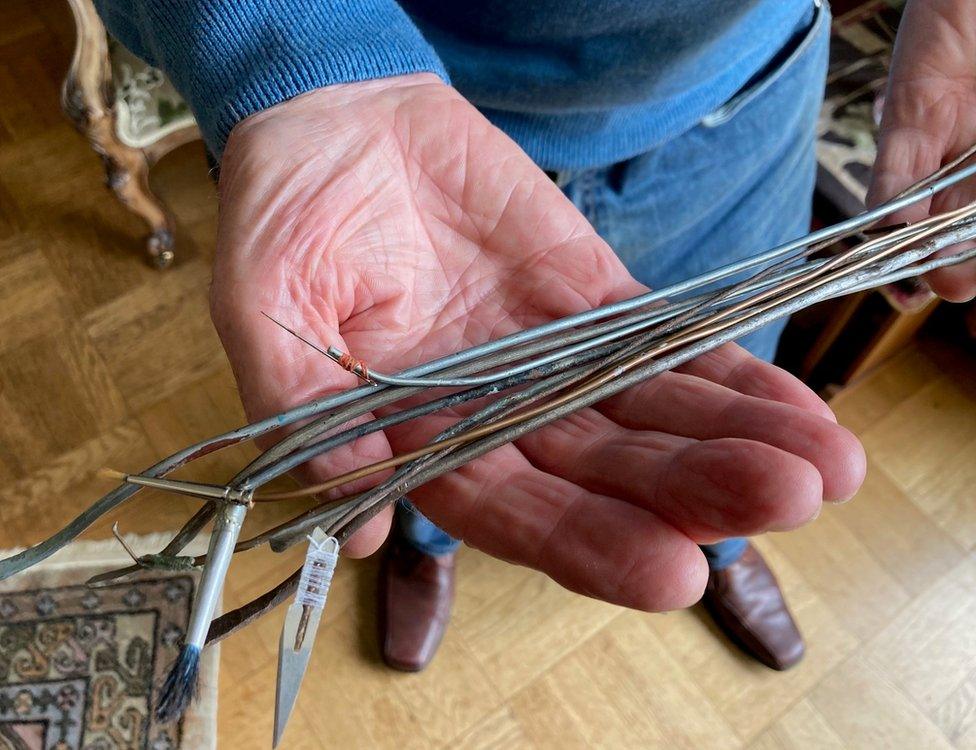
Len uses handmade tools to create his models and manoeuvre them into the bottles
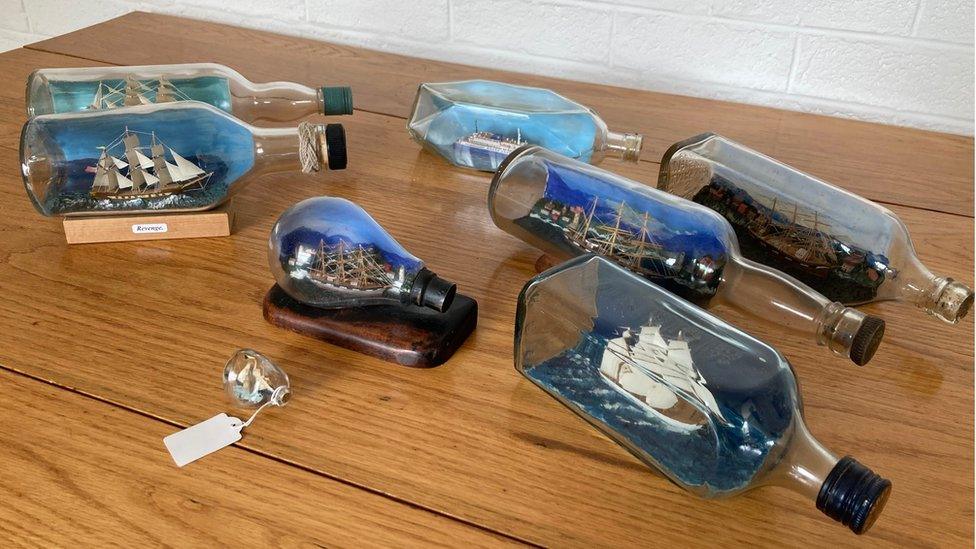
Models by local makers are featured in the display at the Northlight Gallery in Stromness
Len uses one of his hand-made metal tools to slowly manoeuvre the collapsed ship into the bottle and then it is upended and held into position with threads.
That makes way for the job of pushing the sea, which is made of coloured putty, into the neck of the bottle; this is then allowed to set overnight before the ship is placed back into position on top.
The next stage is to pull a thread which should bring the sails and masts to life.
Artist Fiona Sanderson has been learning the craft from Len.
She says she wanted to study with him because he teaches in the authentic way.
"You can find books and YouTube videos on the subject but they kind of cheat using metal hinges," she says.
"The way Len makes them is how they would have been made for hundreds of years."
The earliest known ship in a bottle dates back to 1784, according to Simon Stephens, curator of the ship model and boat collections at the National Maritime Museum in Greenwich, London.
"It was made by a Venetian called Gionni Biondo who made bottles in glass blown bottles for various members of the aristocracy and in the Venetian Navy as well," he says.
And more started to appear into the 19th century.
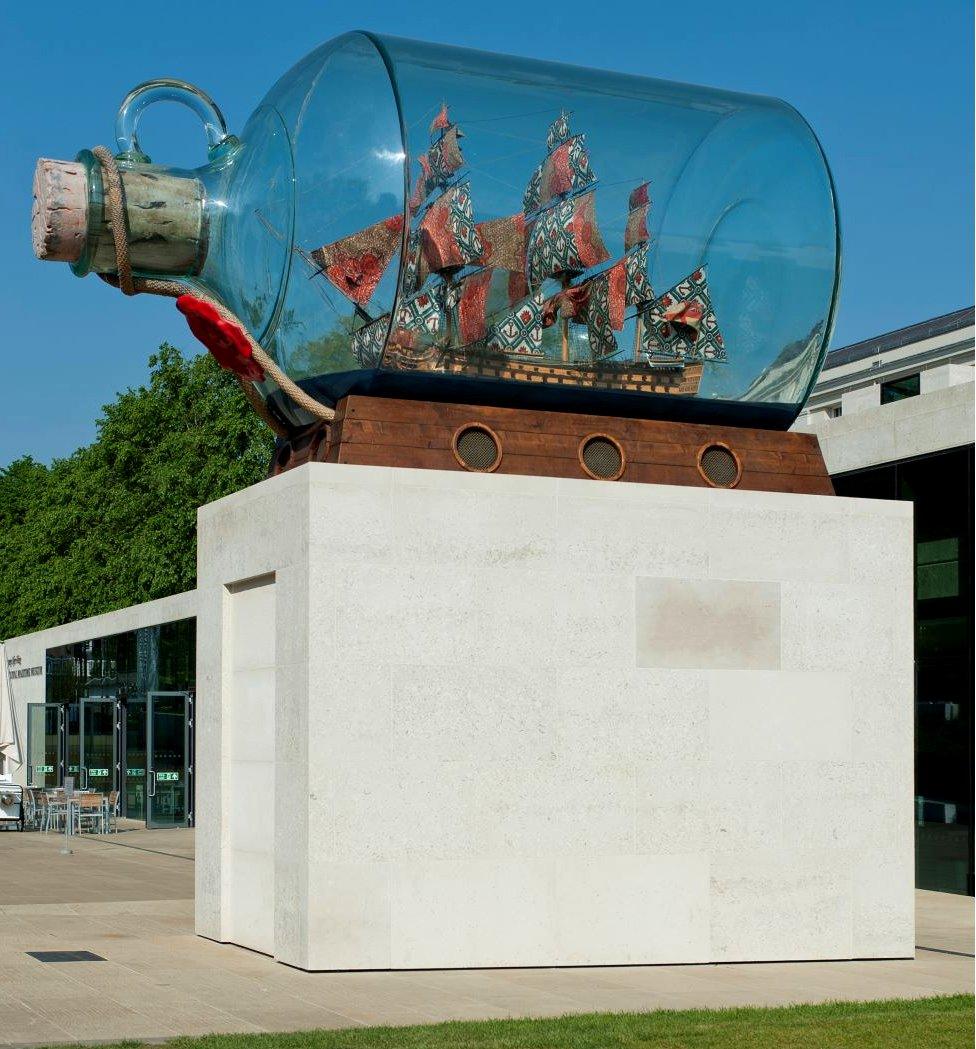
Yinka Shonibare's Nelson's Ship in a Bottle was commissioned for Trafalgar Square's fourth plinth and now sits outside the National Maritime Museum in Greenwich
The National Maritime Museum is home to the world's largest collection of ship models with more than 4,500 pieces.
"We think we've also got the world's largest ship model in a bottle, says Mr Stevens.
"It's a beautiful artwork by a very famous artist called Yinka Shonibare and it was commissioned for the fourth plinth in Trafalgar Square. Afterwards we decided to buy it and it's now on open display outside the museum's main entrance.
"It's so big our conservator can climb in through the neck to give it its annual clean and restoration."
The idea of placing objects in bottles goes back even further to the 16th century according to Peter Bradshaw, president of the European Association of Ships in Bottles.
He says miners in Bavaria and Central Europe frustrated with their working conditions were known to have constructed coal mines in bottles as a "silent protest against the way they were treated by their employers."
The model was constructed in layers, with the miners at work at the bottom, and the top storey showing "their employers feasting, eating and drinking"
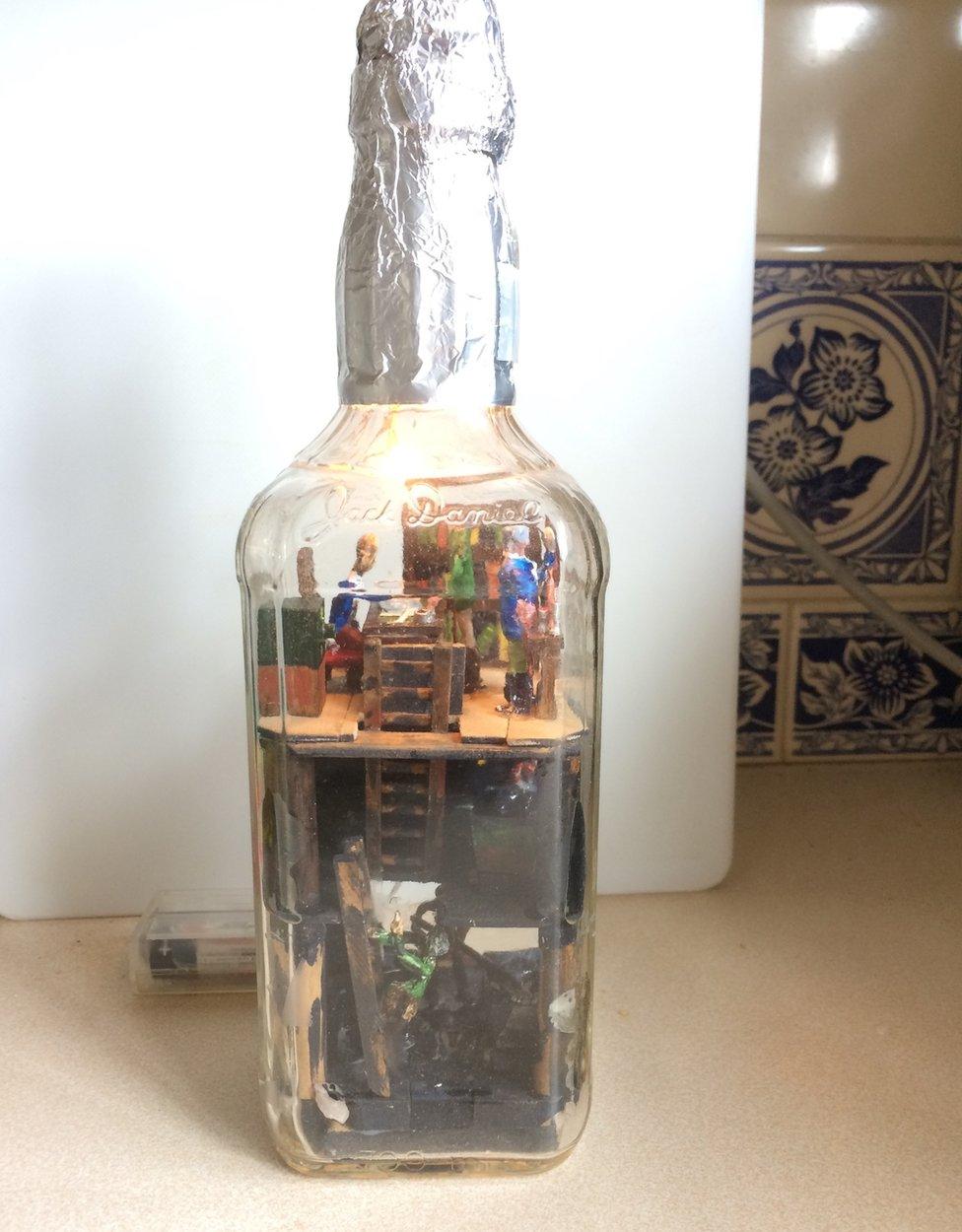
The experts believe sailors constructed ships in bottles for various reasons: a challenge to keep them occupied in their time off, to make some extra cash for going to the pub when they were ashore, as a present for family or just as a keepsake.
For Len's student Fiona the best bit in the painstaking creation of a ship in a bottle is the moment when it finally comes to life.
"When you've spent nearly 50 hours, in my case, making this little model of a ship and then you just squash it down with your thumb and you've got to have strong nerve to actually get it into the bottle and then begin this intricate process of making it look right.
"It feels magical."
The exhibition in Stromness is on until Thursday the 27 July.